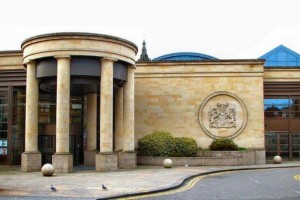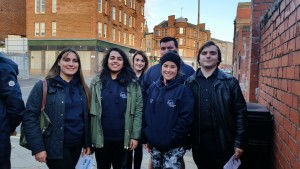Jane Goodall is 87 years old and she was born on the 3rd April 1934 in London.
She is an English primatologist and anthropologist and she is best known for her 60-year study of social and family interactions of wild chimpanzees. She is the world`s best-known living naturalist and founder of the Jane Goodall Institute.
In April 2002 she was named a United Nations Messenger of Peace and she is also an honorary member of the World Future Council.
Jane was fascinated with animal behaviour in her early childhood and she dreamed of travelling to Africa to observe exotic animals in their natural habitats.
Through Jane`s research, it is believed that she has developed a breakthrough approach to species conversation that improves the lives of people, animals and the environment by highlighting how they are all connected to each other.
One important aspect of Jane`s career is to show others why protecting the natural environment and species matter to people and the planet.
During the COP26 Jane was announced to be the COP26 Advocate, and during this time she drew the world`s attention to the importance of tackling climate change and she also raised awareness about the importance of climate action globally.
Before COP26 started Jane appeared on a Twitter video in which she said:
“We have come to a turning point in our relationship with the natural world. The COVID-19 pandemic has shown that we must change our ways. In my 87 years, I have seen the ice melting in Greenland and the glaciers vanishing on Mount Kilimanjaro and around the world. Forests are disappearing – deforestation means we are losing one of the lungs of the world. In 100 days, it is crucial that world leaders come together at COP26 to take urgent action to protect our planet.”
A global study from the World Economic Forum was conducted before COP26 started and it found that most people do not feel their countries are prepared to tackle climate change. However, in response to this study Jane reminded us all that hope can be a way out of our darkest times she said:
“Hope is rather like being in a very dark tunnel with many obstacles that have to be climbed on, and it seems impossible to get to the other end, where there’s a speck of light, that hope. Hope can’t happen unless we take action and fight to get there. Once in place, hope can propel us to do more and even inspire others to join in. It’s an upward spiral.”
Jane pushes for progress against the climate emergency in 4 different ways. Firstly, she talks with people and not at them as discussing problems by arguing at people makes it harder for the other person to understand your point of view and therefore it becomes harder for them to take your side. Secondly, she connects with compassion, Jane does not point fingers at people instead she finds a connection point between herself and the other person, such as an animal or a hobby, and she takes a few minutes talking about these topics to build a bridge between herself and the other person`s different ideas.
Thirdly, she employs stories which means that through a story she begins to connect with other people and these stories often reach people`s hearts. This is good because it is often harder to bind with someone over statistics as change must come from within. Last but not least she acts locally, rather than jumping straight for world change she finds issues within a community and seeks to change them first. Then slowly these little differences start to show great impacts on the wider community and the world as a whole.

